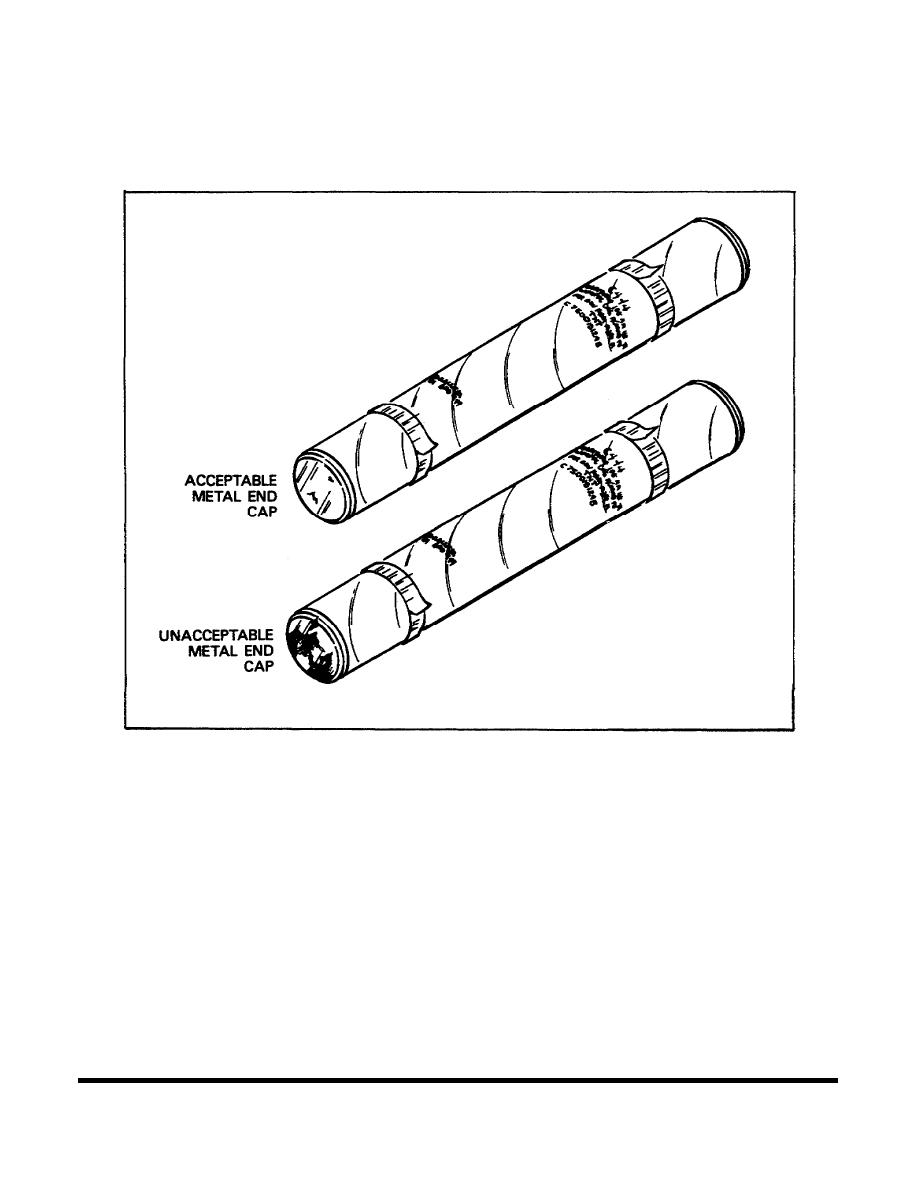
If there is any packing material on top of the containers, remove it. To inspect the containers, start with the metal
end caps. Small rust spots, dents, and cracks are acceptable as long as they do not prevent the container from
protecting the round inside. If the end caps have holes or large amounts of rust, or do not fit securely on the end
of the container, you must replace them. See Figure 1-7.
Figure 1-7. Inspecting the Metal End Caps of a Fiber Container.
Visually and manually inspect the body of the container for moisture, mildew, rot, and cuts or tears. If all layers of
the container have not been penetrated, cuts or tears not closer than 1 inch to the closure and less than 1/2 inch
square may be repaired with tape or spot-painted (see Figure 1-8). Otherwise, these defects are considered
major and the container must be replaced.
Inspect the markings that are stenciled on each container. The nomenclature, the DODIC, the lot number, the
quantity, and the weight zone should be marked on each container (see Figure 1-9). If the markings are worn,
you may be able to touch them up with paint. If they are illegible, you must restencil them with the markings on
the projectile itself.
Inspect the tape that seals the end caps to the container. Check to make sure there is a good seal against
moisture. If the tape on a container does not provide a tight seal, open the container and inspect its contents for
damage. Otherwise, repack the box. Reseal it by putting new bands around it and installing a lead-wire seal in
the latch.
7
MM2604


 Previous Page
Previous Page
